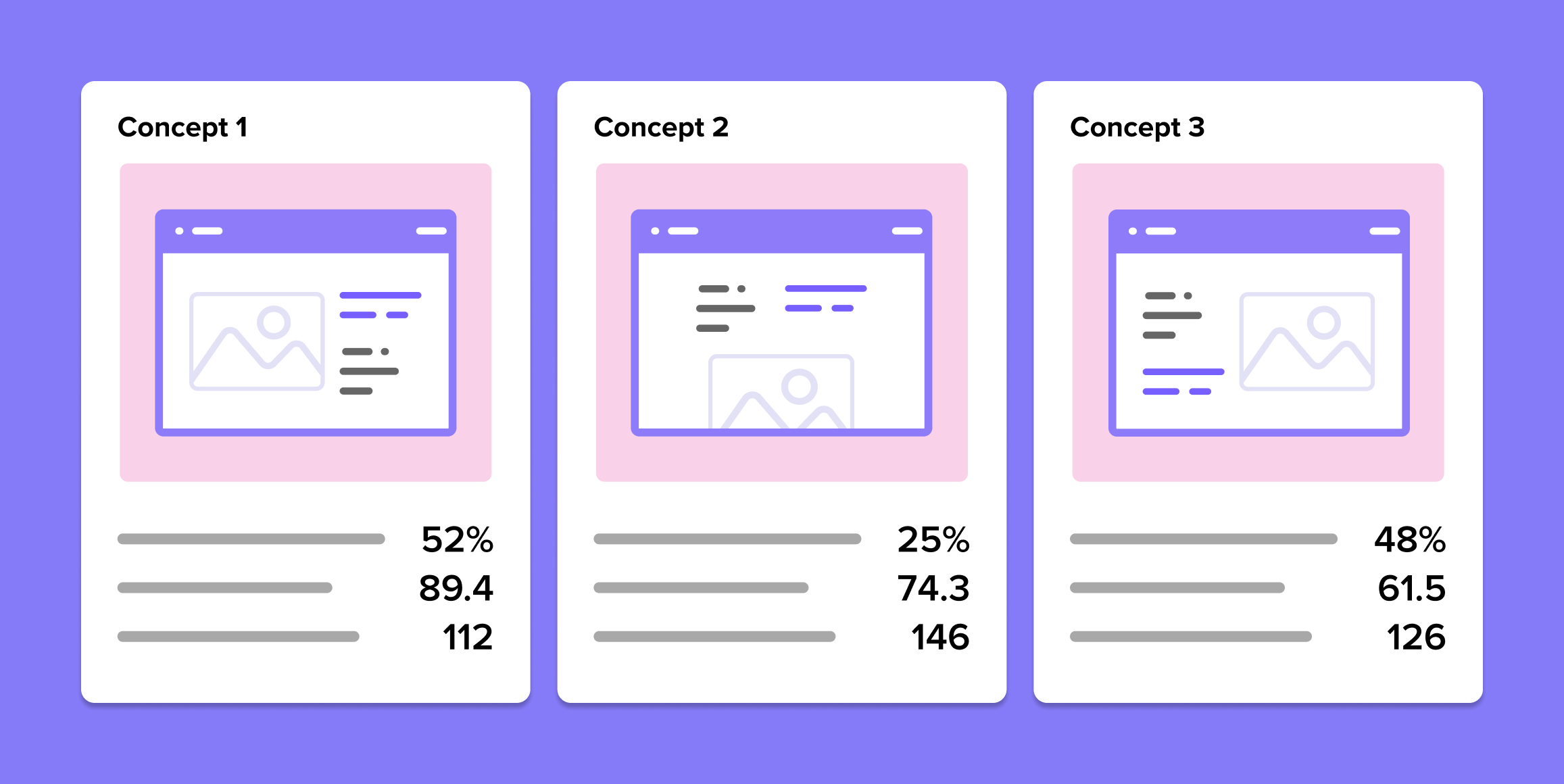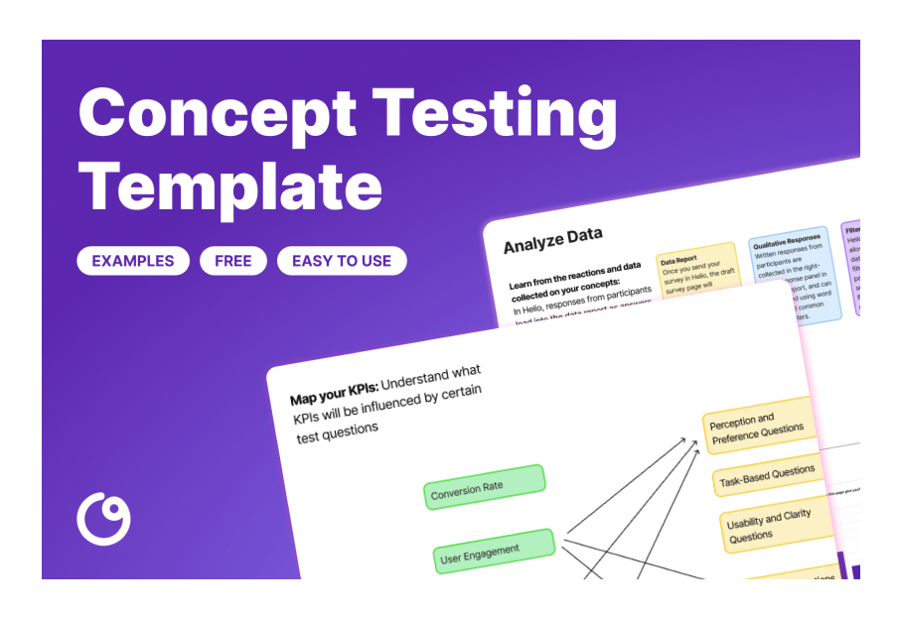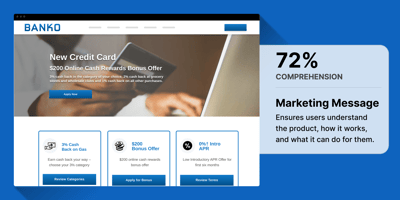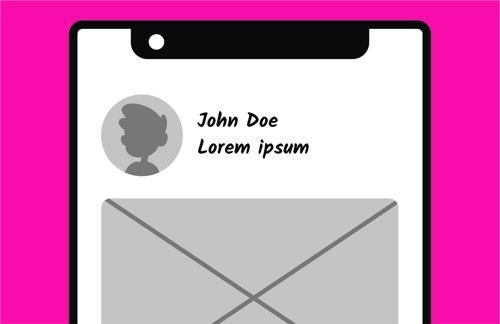Minimize product failure risk with concept testing
Avoid costly development cycles and uncertain outcomes. Use concept testing to identify high-potential ideas early and maximize your returns.


Reduce the risk of going in the wrong direction
Validate your ideas early with concept testing. Get user feedback to identify issues and make adjustments, saving time and money on costly redesigns.
Create a superior user experience
Understand user preferences and pain points. Use this insight to make data-driven design decisions, increasing customer satisfaction and retention.
Bring new features and products to market faster
Make quicker decisions and prioritize promising concepts. Align your teams for agility, stay ahead of the competition, and meet customer demands swiftly.
Map to UX Metrics
Comprehension
Sentiment
Usability
Reaction
Explore a Relevant Case Study
How to Conduct Your Concept Testing


Define Your Research Objectives and Methods
Identify specific objectives such as evaluating initial reactions, identifying strengths and weaknesses, and gathering suggestions for improvements.
Depending on your objectives, methods like surveys, focus groups, and in-depth interviews will help you gather comprehensive feedback on your concept.

Prepare Your Concept and Design Your Questionairre
Ensure that participants understand the concept fully by providing necessary details, visuals, and context.
Include sections such as screening questions, evaluation questions on appeal and understanding, comparative questions, and open-ended questions. Use different question types like multiple choice, Likert scale, and follow-ups to capture a wide range of insights.

Analyze Your Findings
Use quantitative and qualitative analysis methods to interpret the feedback. Visualize the data using graphs and charts to identify key findings related to the concept’s strengths, weaknesses, and areas for improvement.

Implement Changes
Make necessary adjustments to your concept based on the feedback. This could involve modifying features, improving clarity, or addressing any identified issues.
Business questions that can be addressed with concept testing
Here are some common questions product or marketing leaders ask that can be addressed with concept testing:
To find out if your target audience will like your new product concept, concept testing is essential. Helio lets you present your idea to potential users and gather their feedback. Identify reactions and pinpoint areas for improvement before launching.
With Helio, you can create targeted surveys and quickly collect feedback from your specific audience. Refine your concept based on real user insights to ensure it meets their needs and expectations.
Make informed decisions about your product concept to increase its chances of success and save time and resources by addressing potential issues early.
Concept testing determines which design elements resonate most with potential customers. Helio uses this approach to refine product designs by presenting various design options, such as color schemes and layouts, to real users.
Gather feedback on what users find most appealing and intuitive. This process helps identify preferences and make data-driven design decisions.
Helio ensures your design choices align with customer expectations, leading to more user-friendly and engaging products that enhance user satisfaction and loyalty.
Concept testing helps identify usability issues and pain points in your product concept. Helio enables you to present different aspects of a product to potential users and collect their feedback.
Create tests that simulate real-world usage scenarios, asking users to interact with the product concept and gather detailed feedback on their experience. Highlight any confusing elements, difficult navigation paths, or other usability issues.
Addressing usability issues early in the design process with Helio leads to a more polished, user-friendly product that meets the needs and expectations of your target audience.
Concept testing uncovers the key features or functionalities users expect from a product. Helio presents various product concepts to potential users and gathers their feedback to refine products based on real user insights.
Set up tests where users interact with different features and provide feedback on their experiences. Identify which functionalities are most desired and which might need improvement, such as ease of use, specific tools, or seamless integration with other platforms.
Building products that meet user expectations and needs with Helio’s feedback-driven approach increases their likelihood of success in the market.
I make it a point to share the data we gather because it plays a key role in guiding our decisions and justifying our recommendations. It’s more than just choosing our favorite ad; it’s about making informed choices.

Kevin Dunn, LevLane
Test Template Example
FAQs
Concept testing is a research method used to evaluate and validate new product or service ideas, design concepts, or marketing strategies before they are fully developed or launched. It involves presenting these concepts to a target audience and collecting feedback to determine their viability and potential for success.
Concept testing is crucial for product development as it helps businesses reduce the risk of investing time and resources into concepts that may not resonate with their target audience. It provides valuable insights early in the development process, helping companies make informed decisions and refine concepts for maximum market success.
Concept testing can be conducted through various methods, including surveys, focus groups, in-depth interviews, online questionnaires, A/B testing, and usability testing. The choice of method depends on the nature of the concept and the target audience.
Concept testing should ideally occur in the early stages of product development, before significant resources are allocated to design and development. This allows for timely adjustments and avoids costly rework.
Sample size selection depends on the research objectives, the level of precision required, and the diversity of your target audience. Generally, larger sample sizes provide more statistically reliable results, but they can be more costly and time-consuming
Concept testing can be applied to a wide range of concepts, including new product ideas, feature enhancements, branding concepts, marketing campaigns, and even business models.
The key benefits of concept testing include risk reduction, informed decision-making, improved concept refinement, better resource allocation, and the ability to identify and address potential issues early in the development process.
Common mistakes in concept testing include not defining clear research objectives, using biased survey questions, failing to engage with a representative target audience, and not adjusting concepts based on feedback.
Effective feedback gathering involves using structured and unbiased survey or interview questions, analyzing responses systematically, and using feedback to make data-driven decisions. This can be done in-house or by collaborating with research experts.






